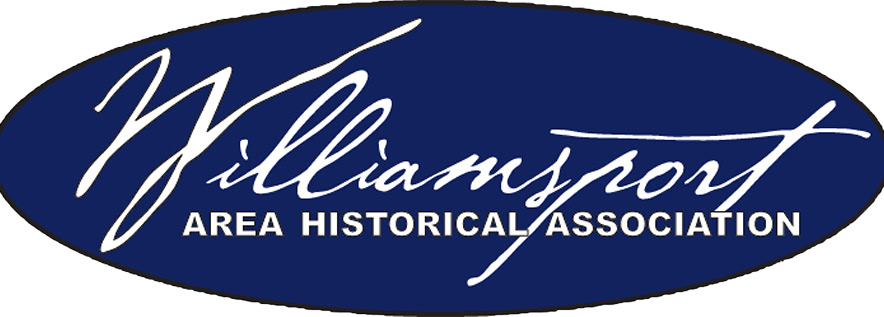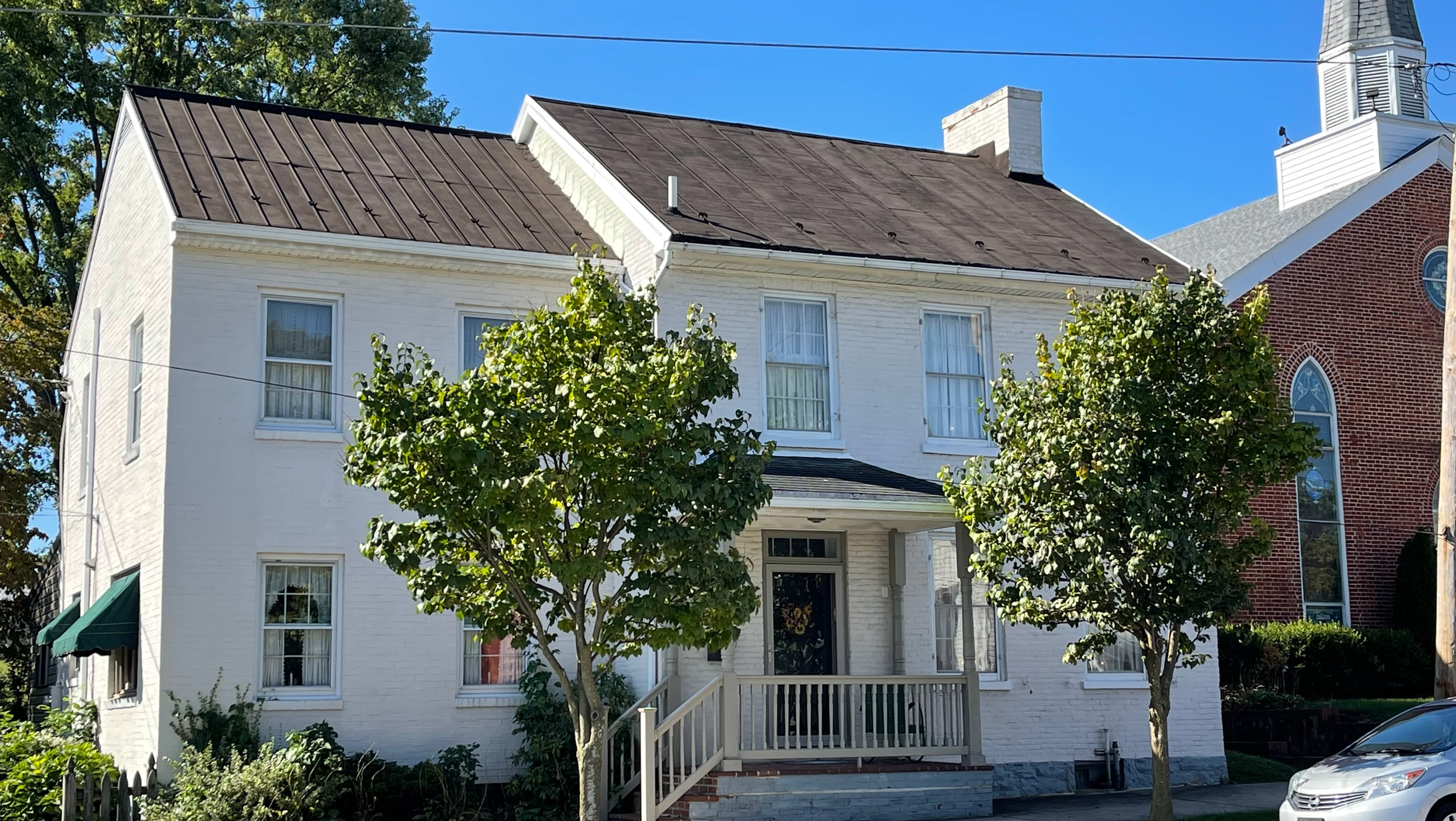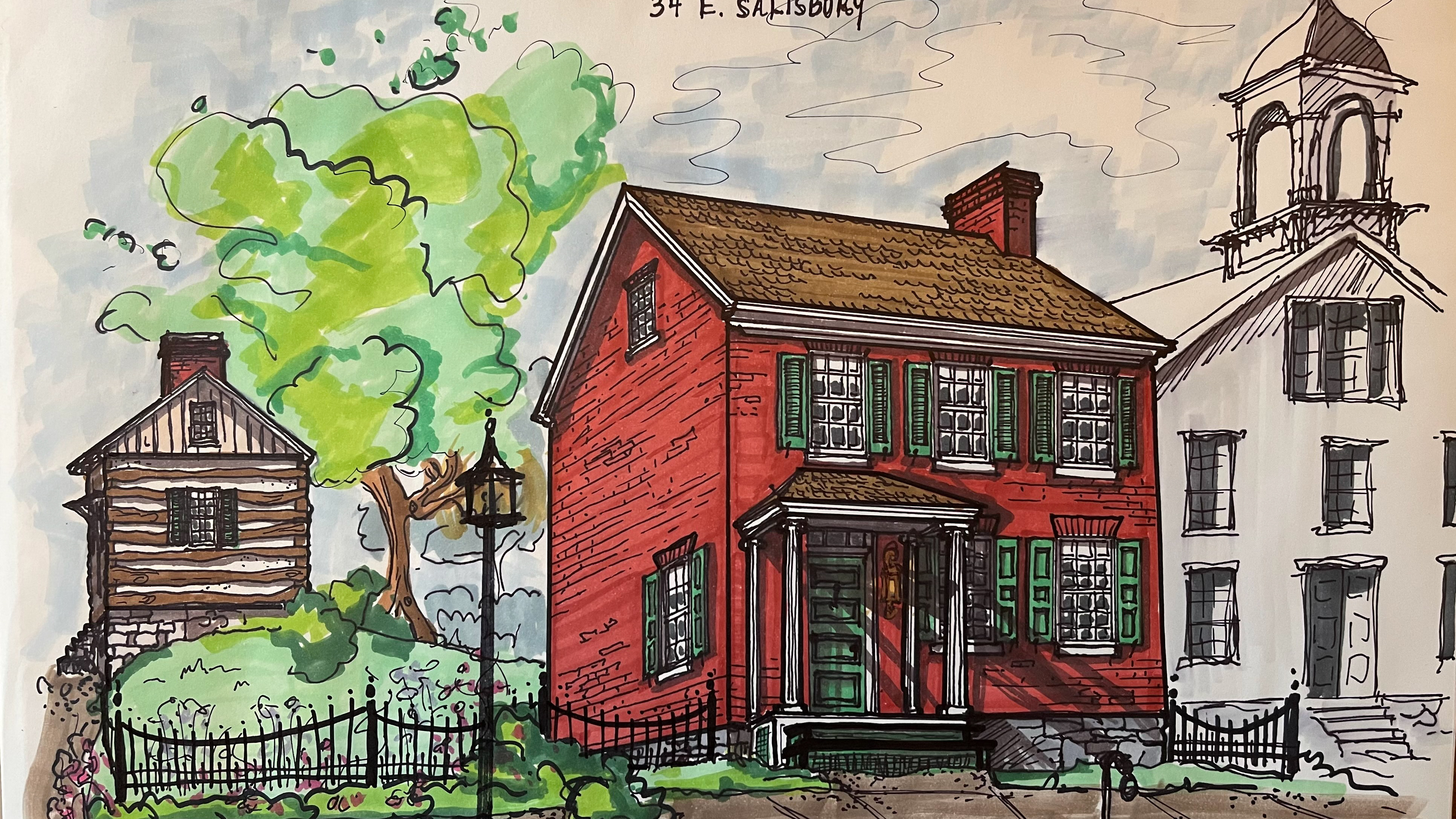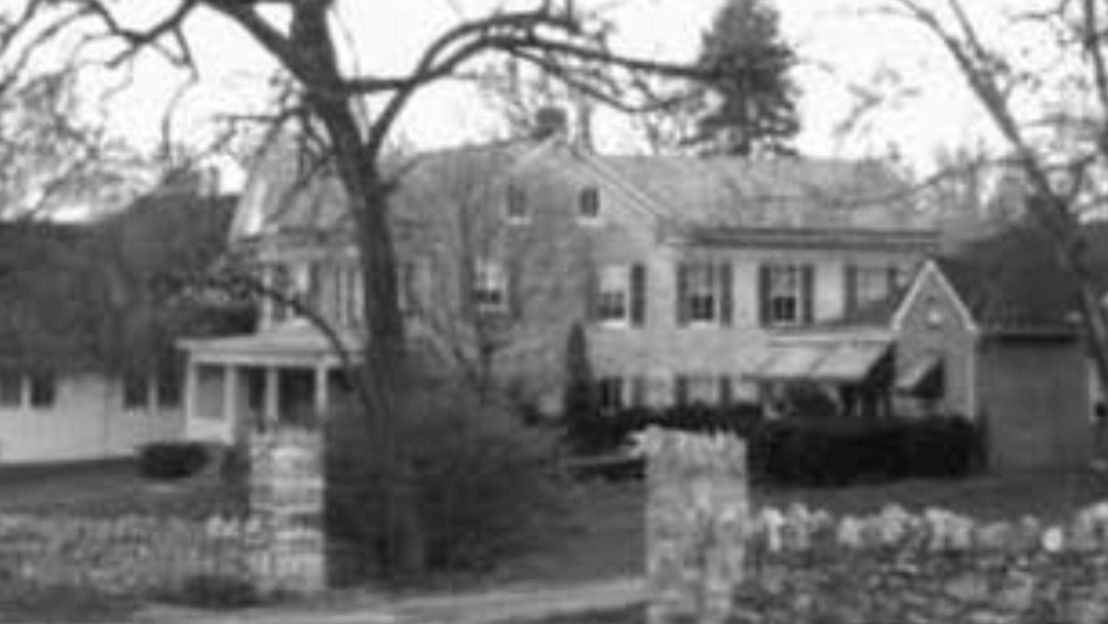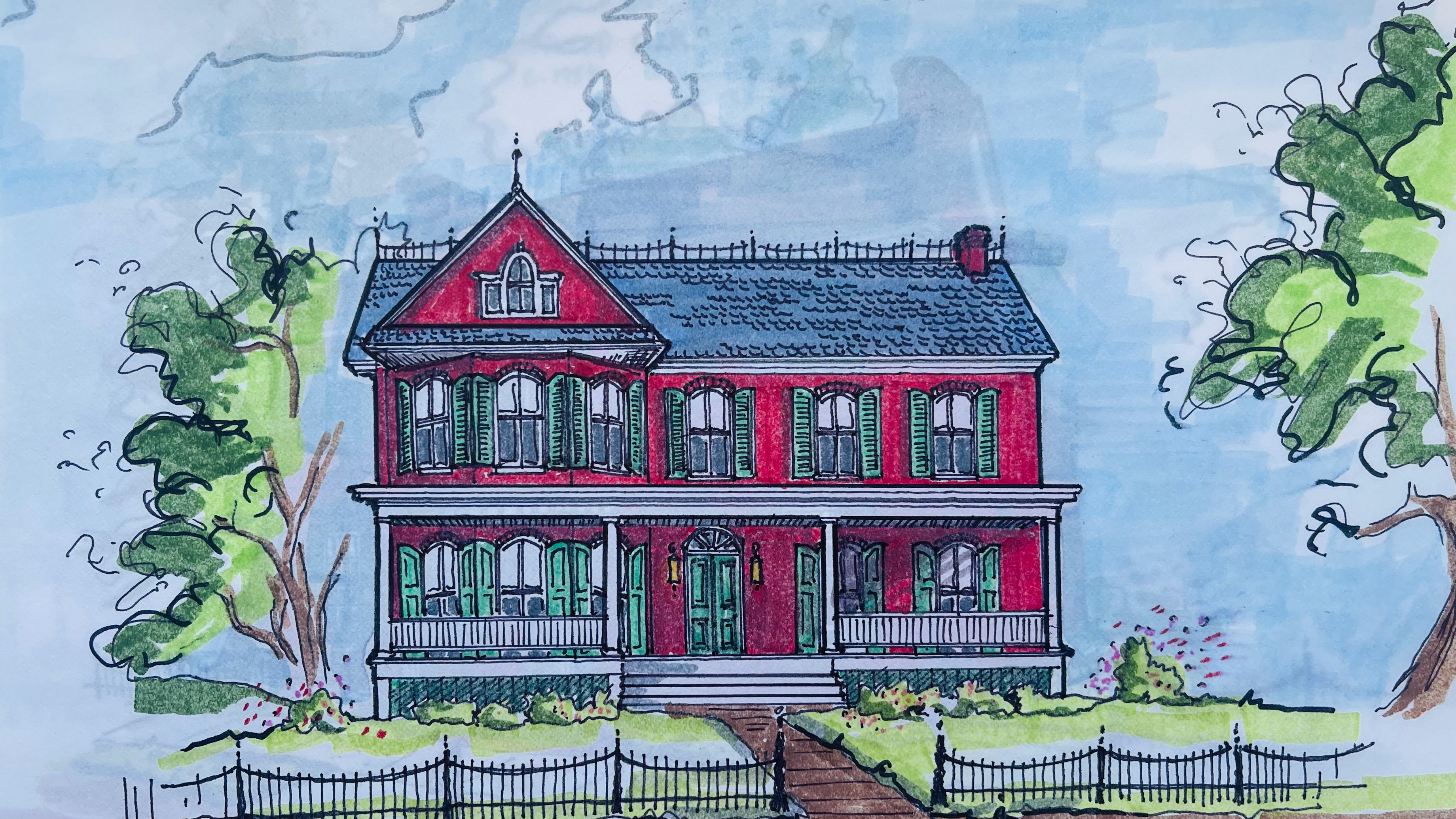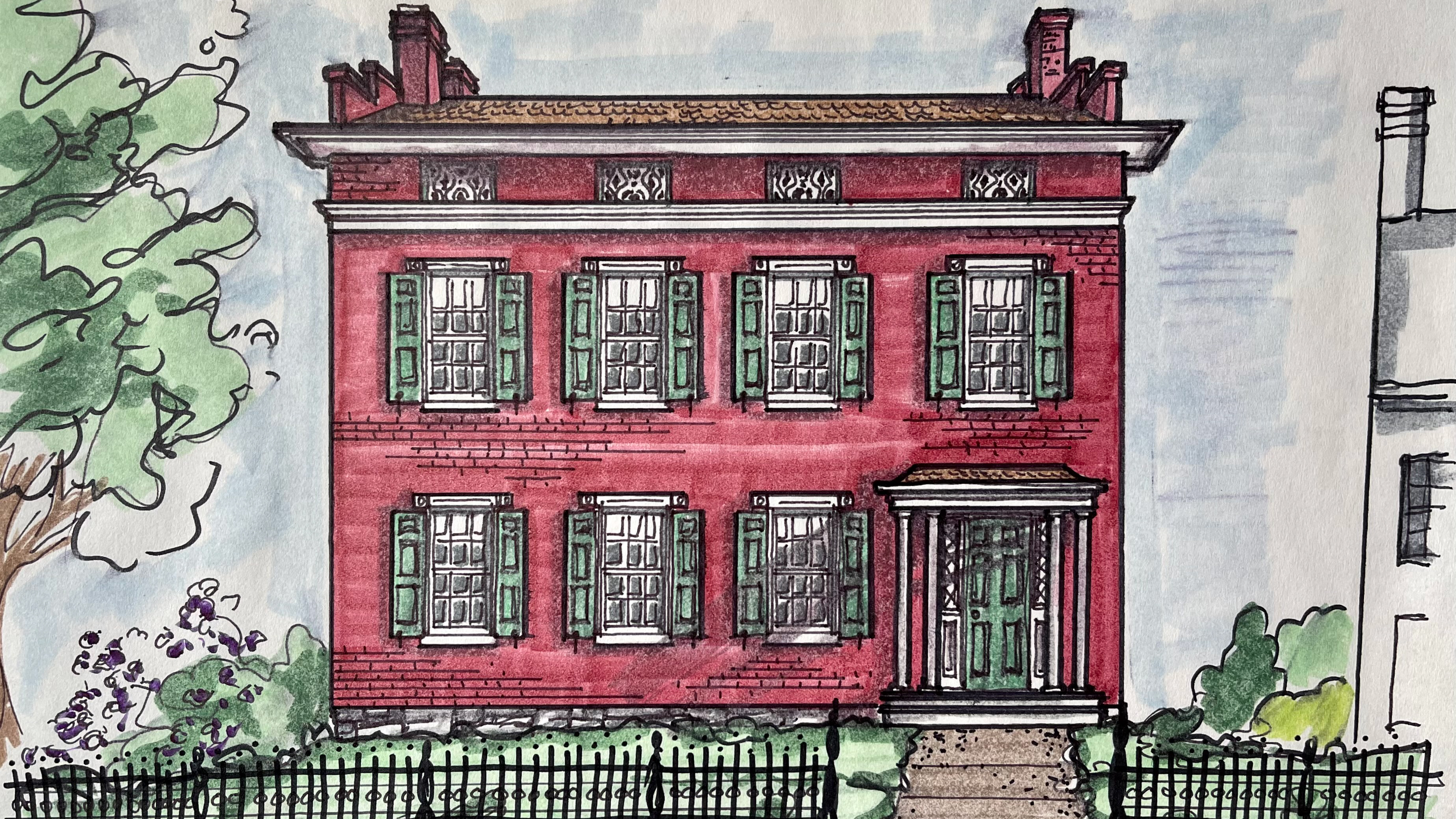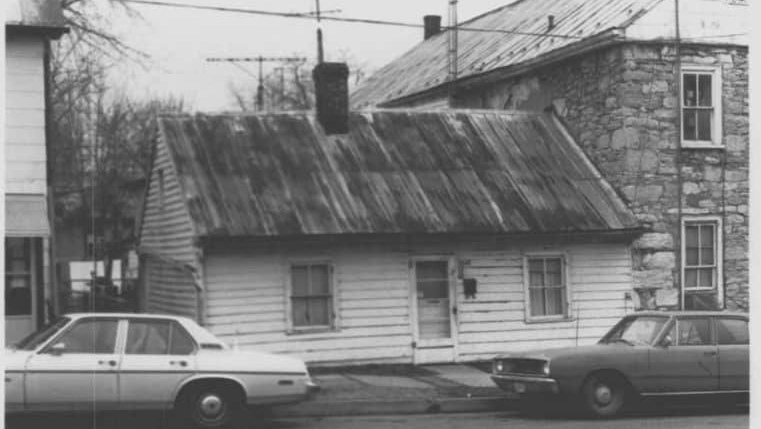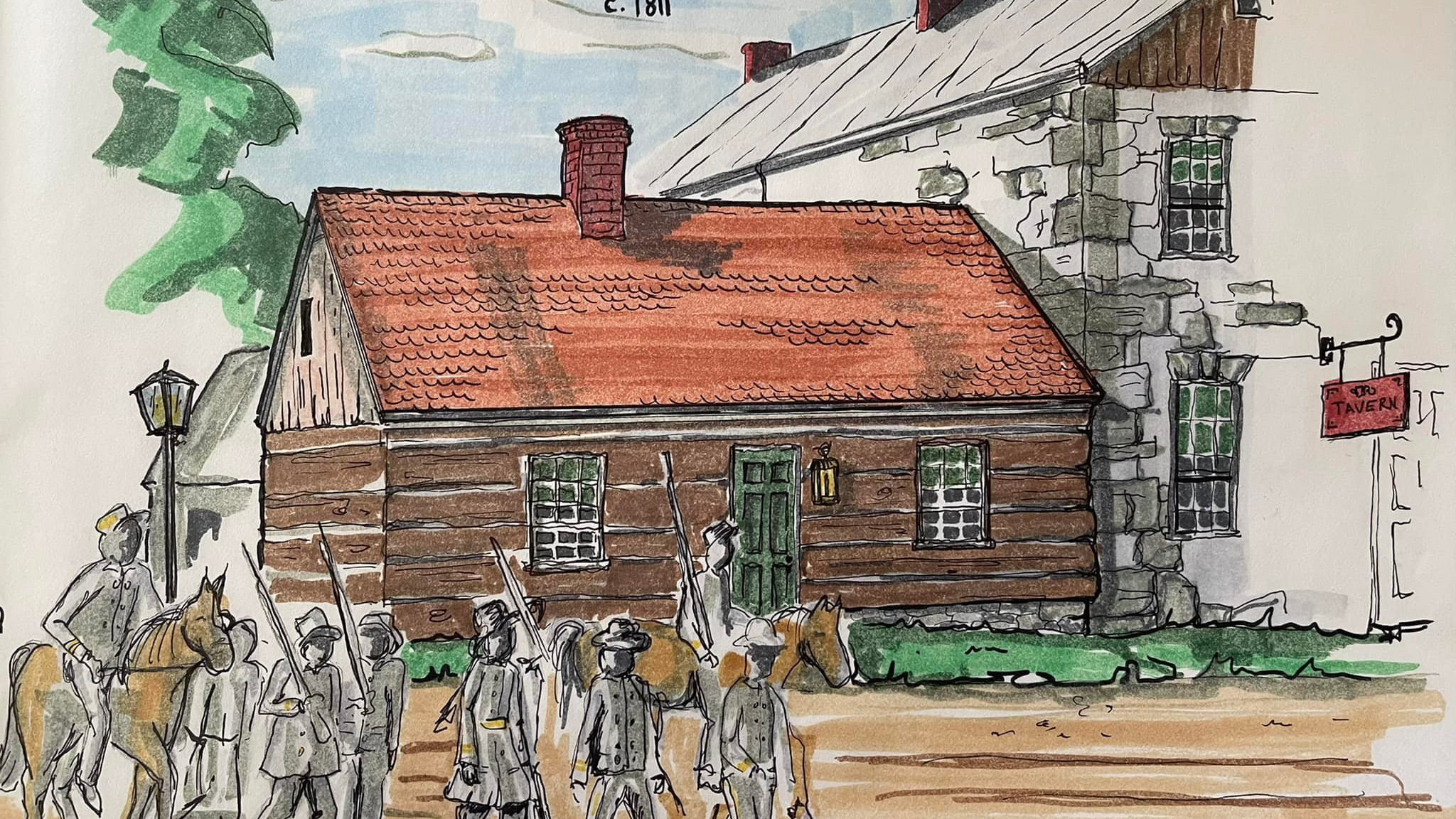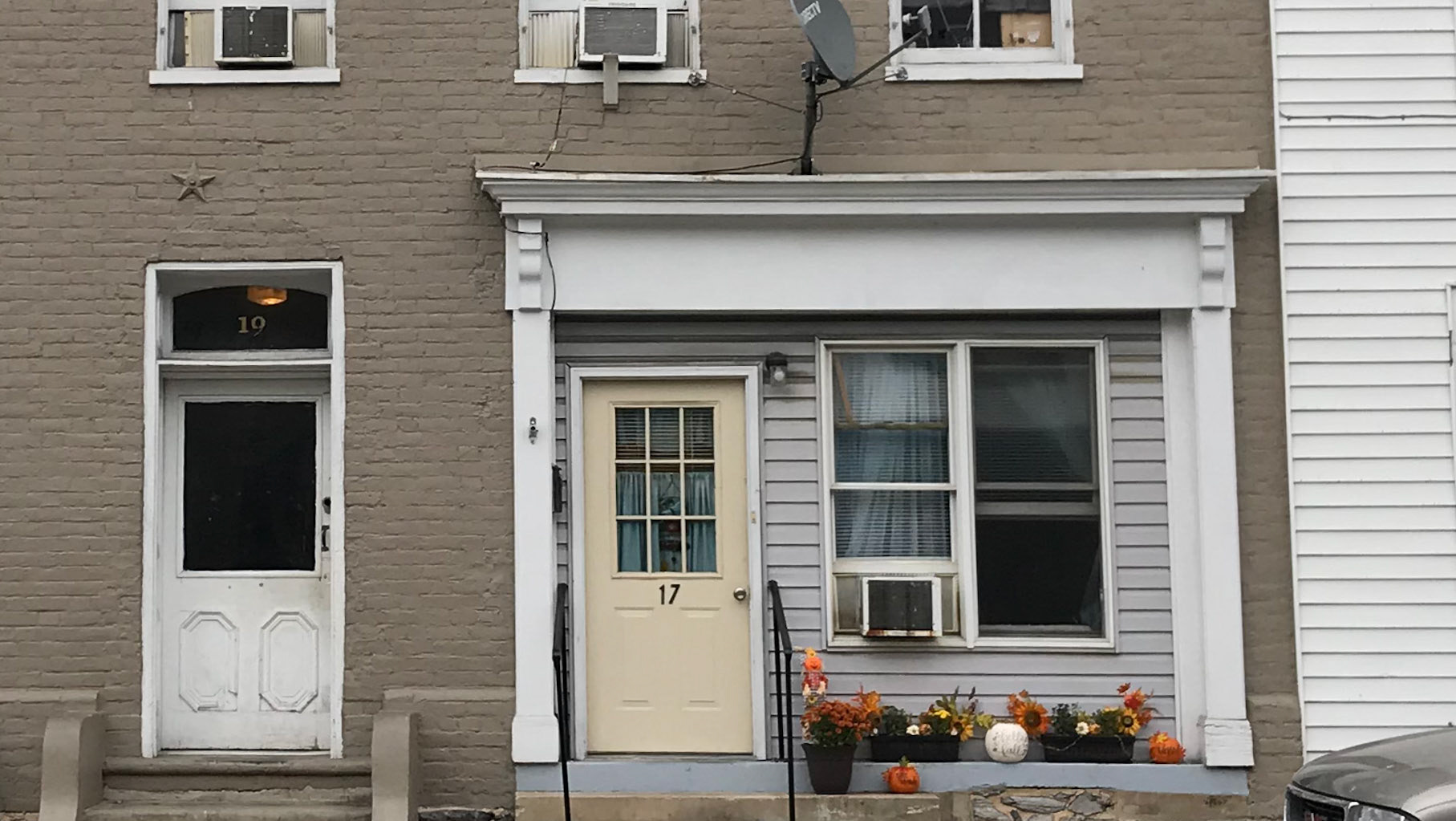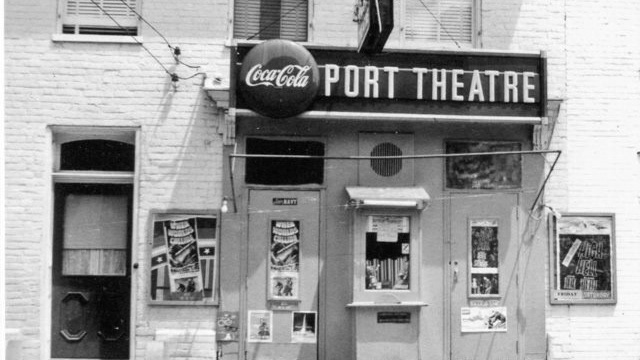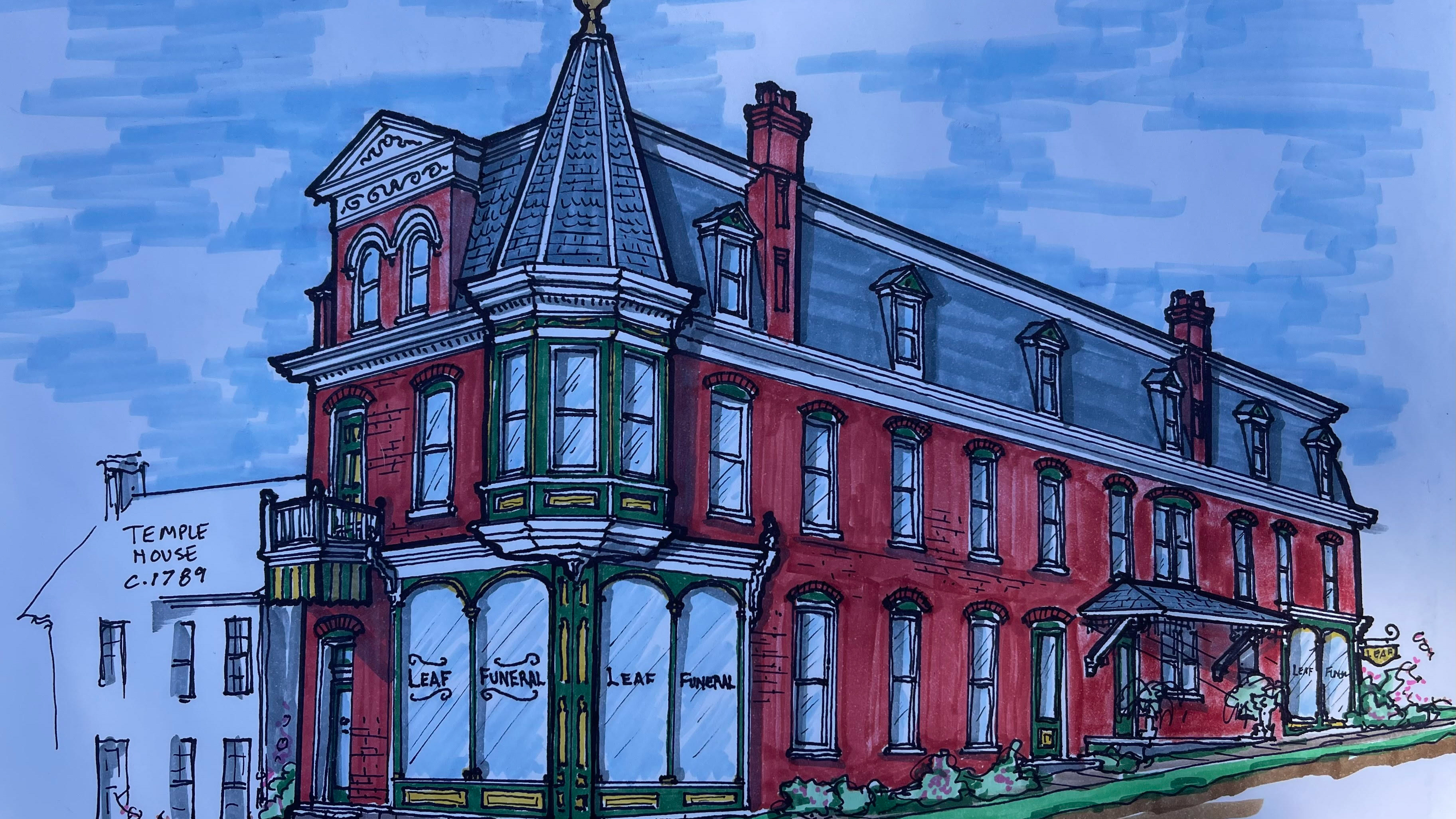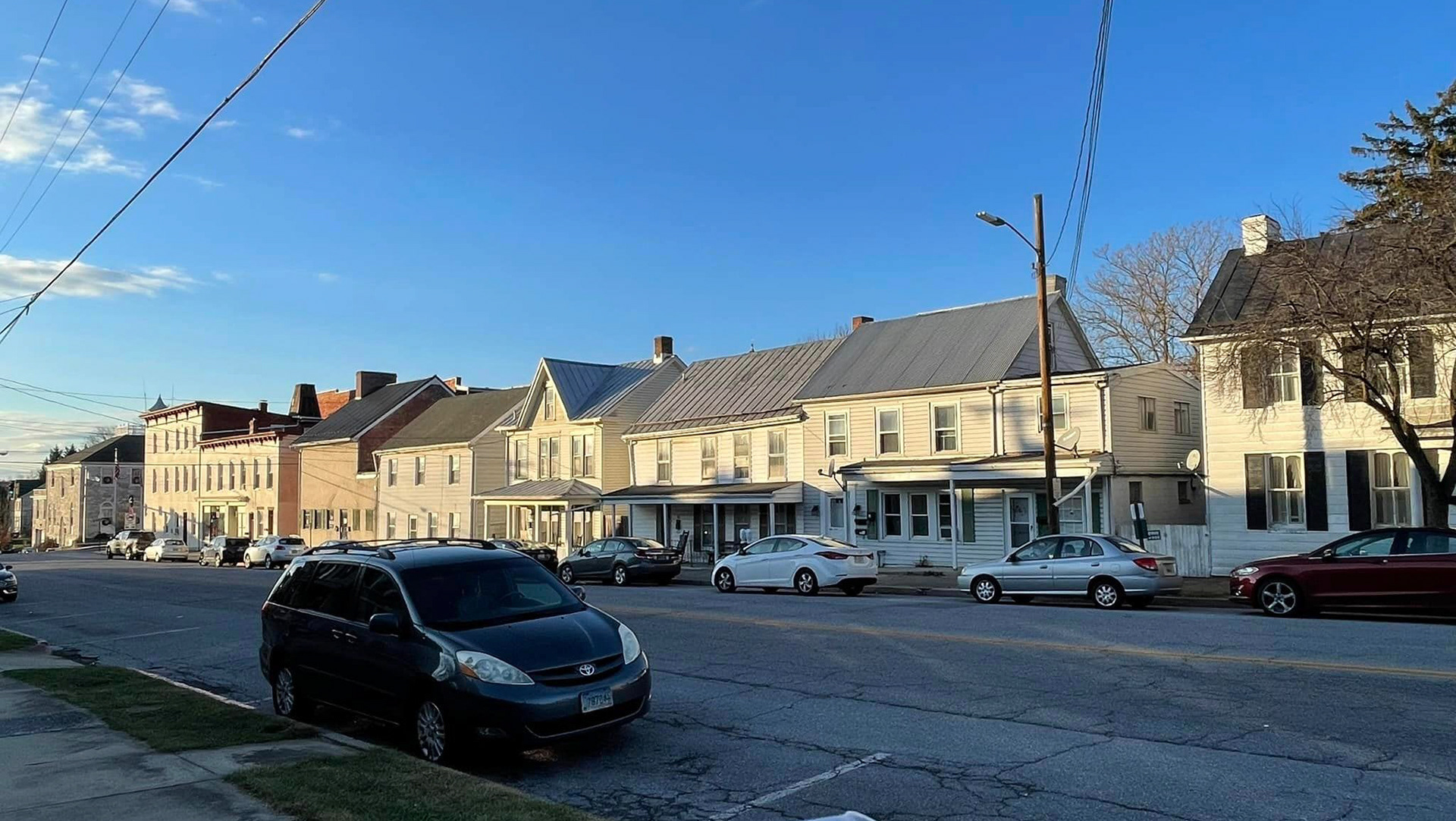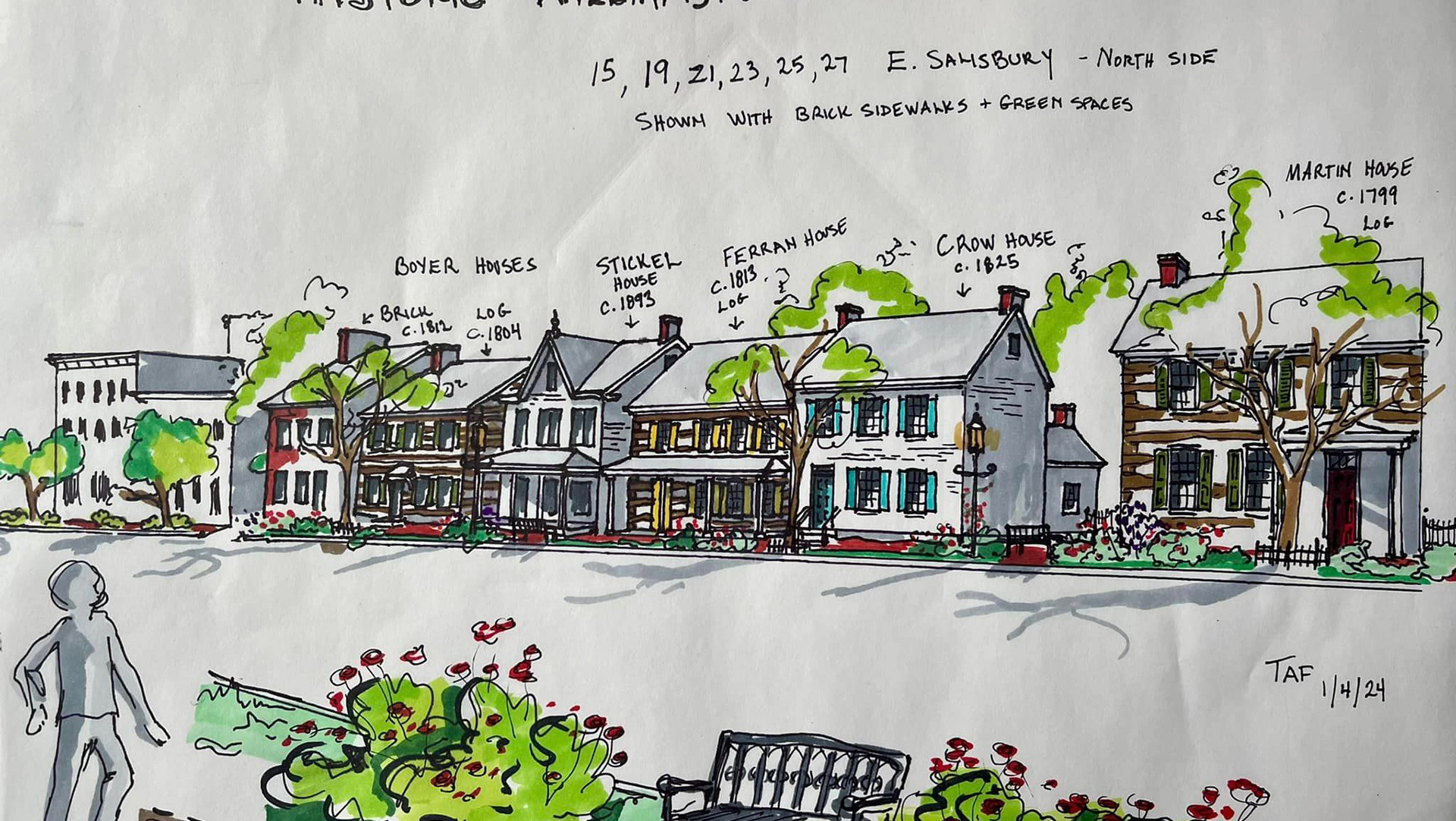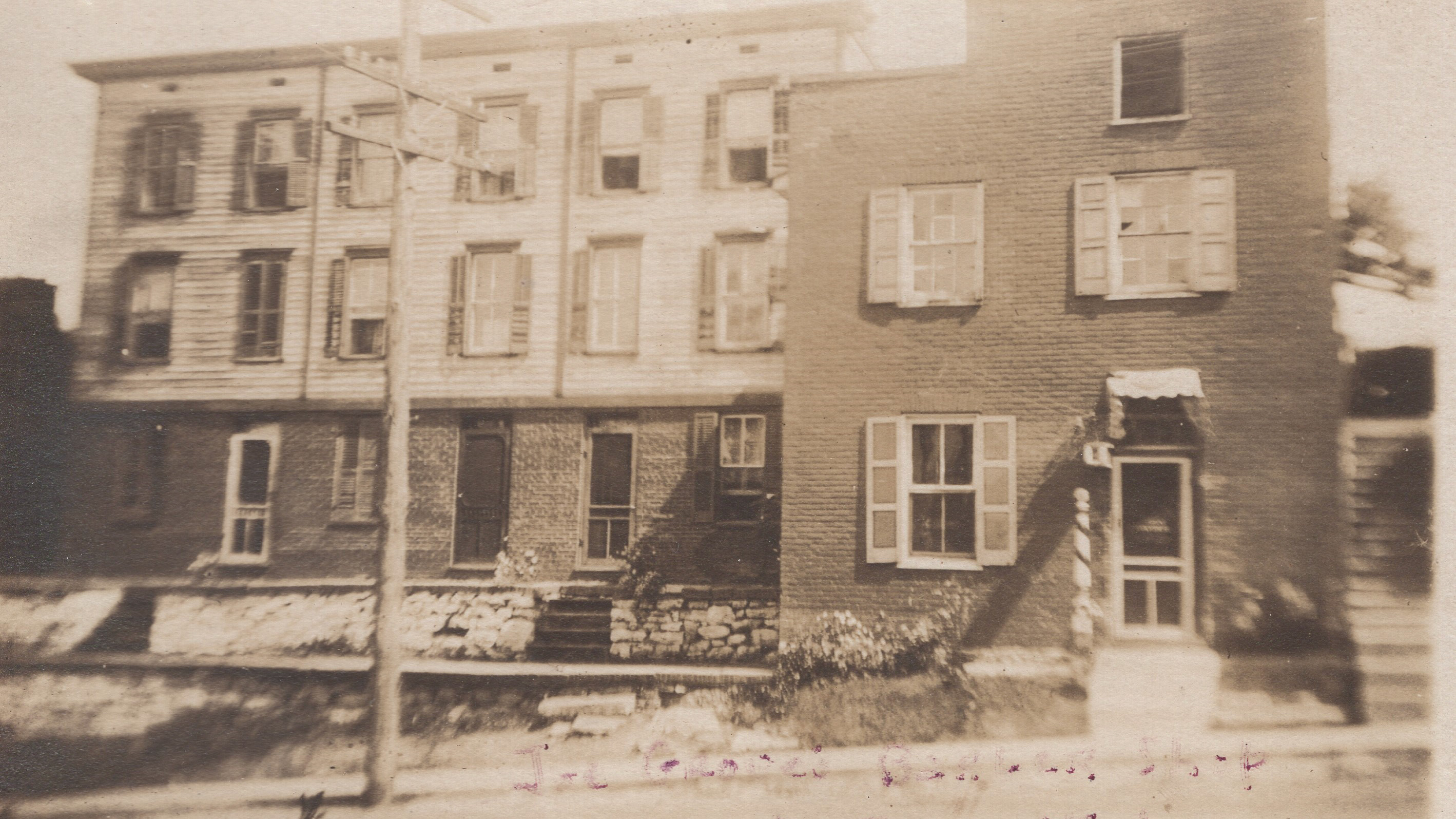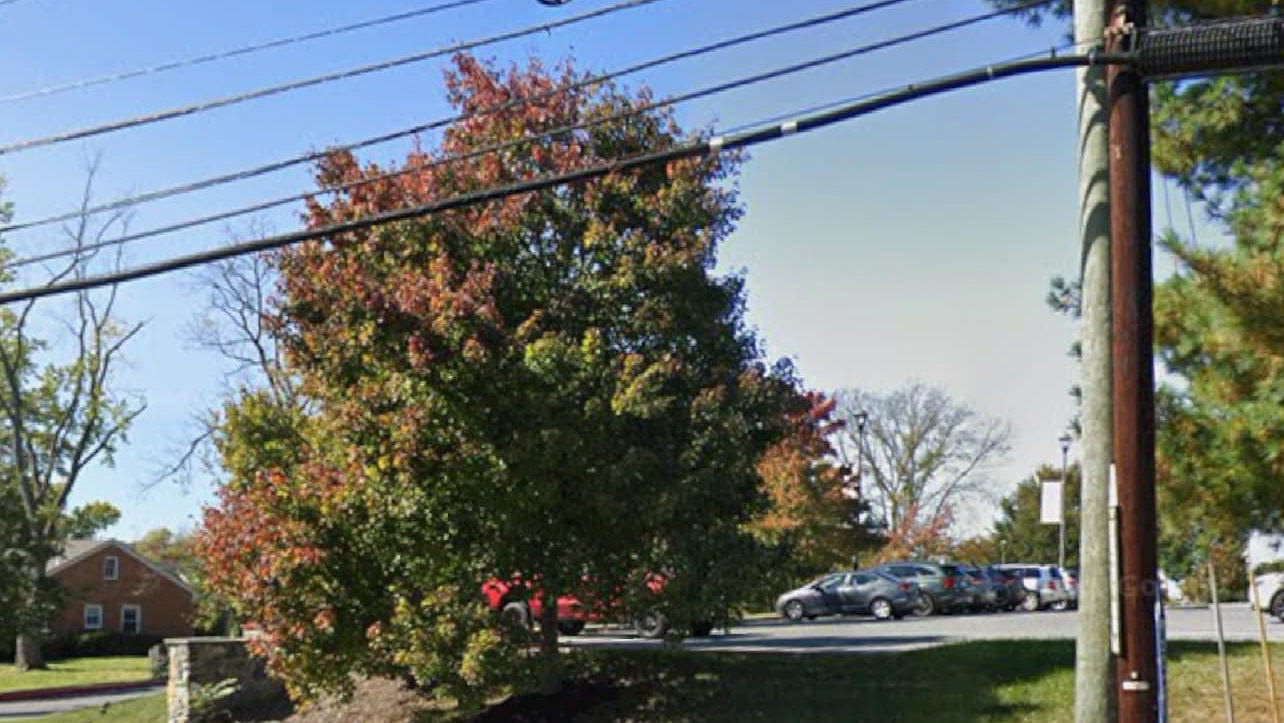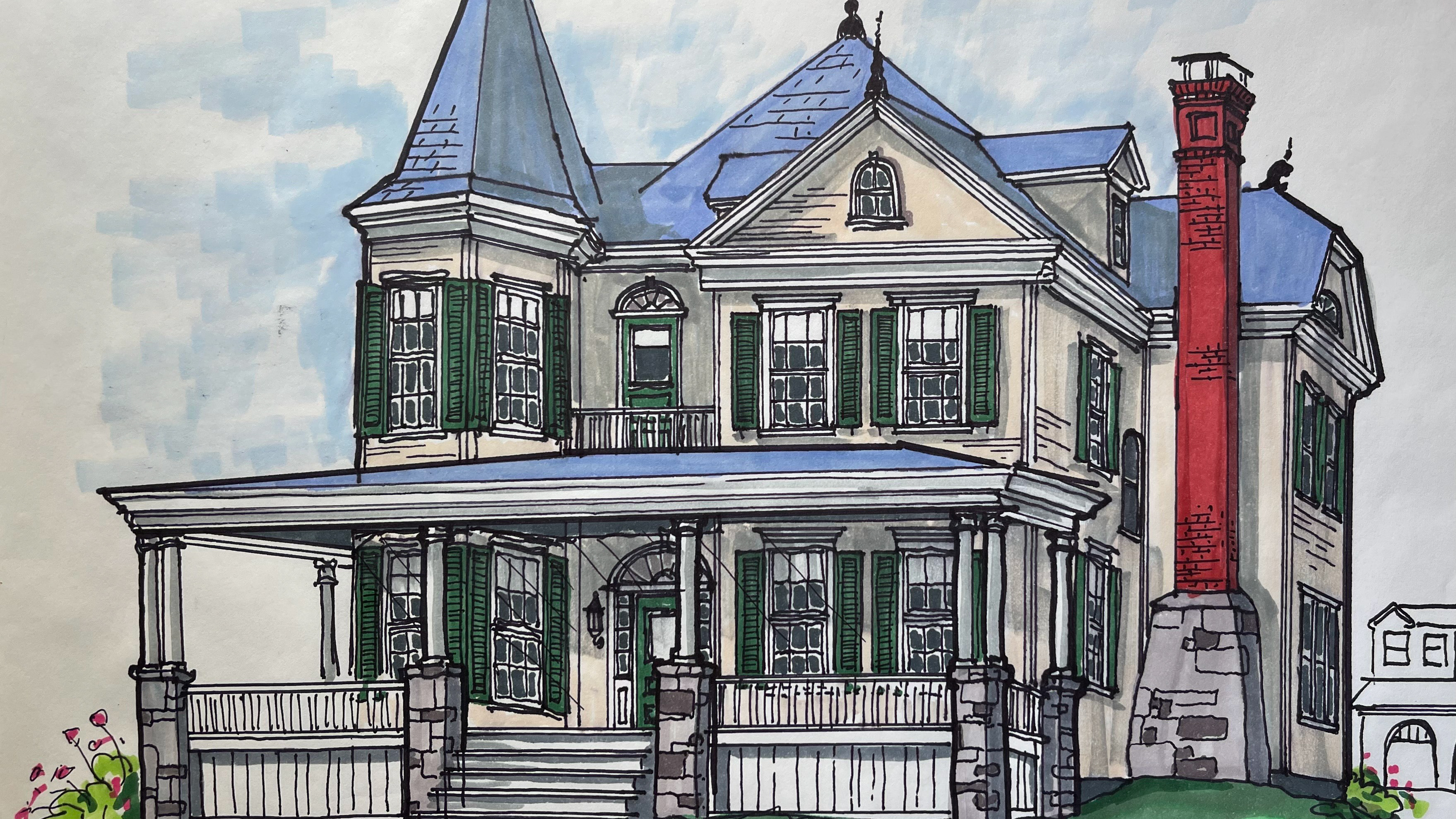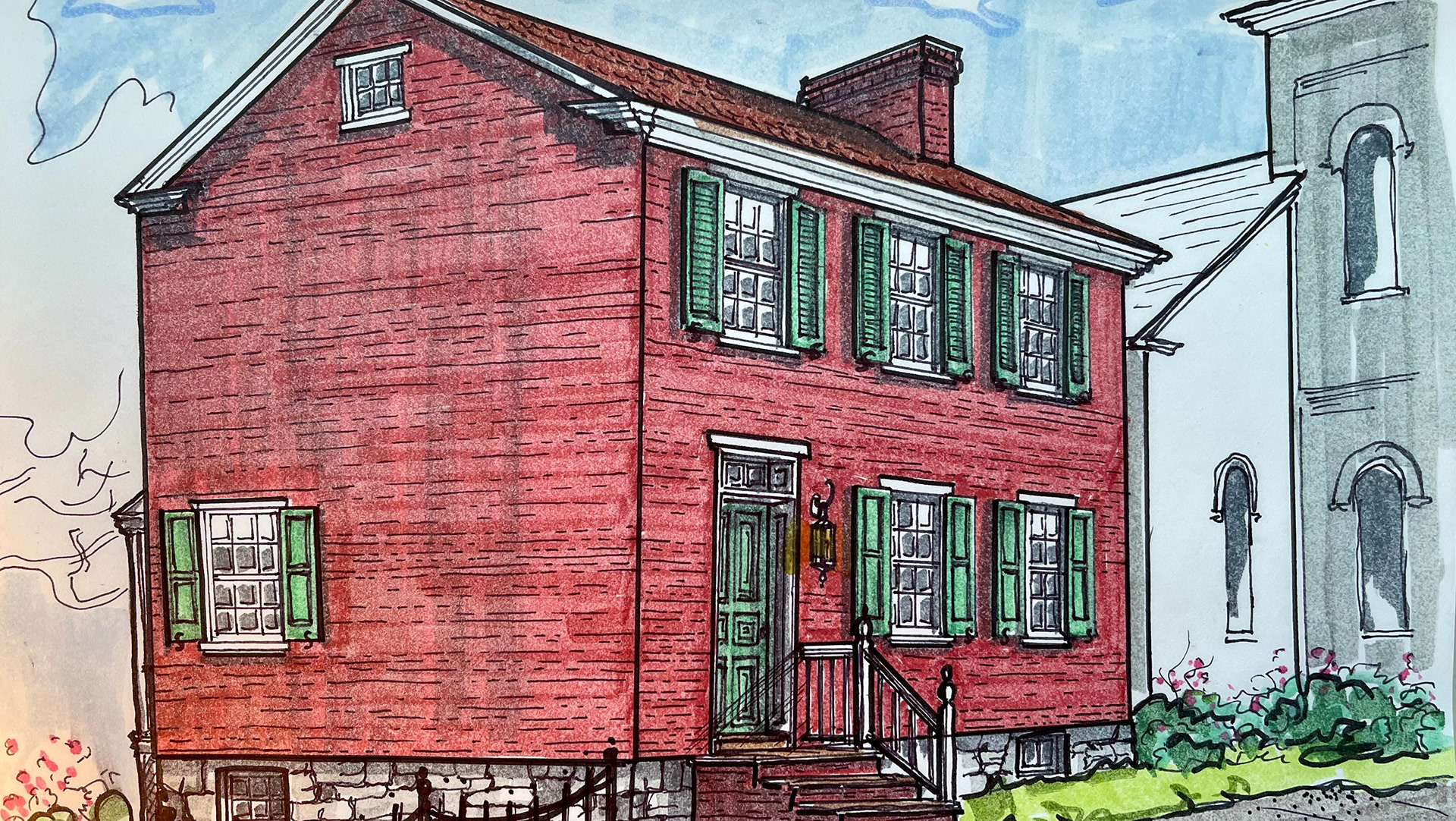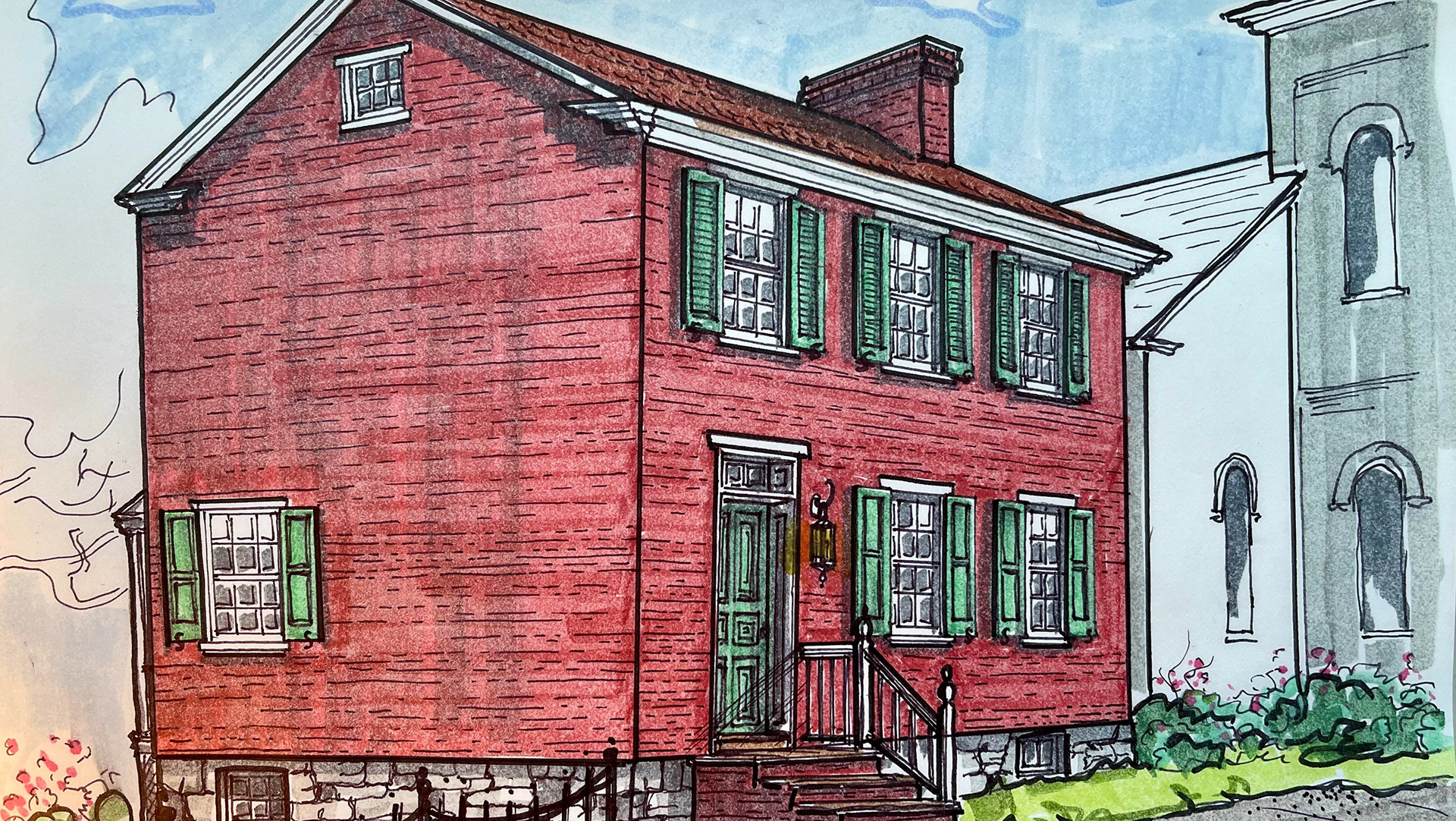On the northeast corner of Potomac and Conococheague Streets in Williamsport, a tired, much altered, but still plumb Federal brick building stands. The building is one of the more significant early buildings that remain in the town after the destruction of the Red Barron at the corner of Potomac and Artizan. Miraculously, the massive chimney at the north end is still extant, although cut off at the top. The brickwork is Flemish Bond at the front elevations, indicative of early, higher-end construction. The western facade facing Conococheague Street remains largely intact. However, the southern facade of the building, facing Potomac Street, has seen a string of changes, many not flattering. The original window placement remains on the upper floor, but the lower has seen many changes. Over the years, the building has watched the development of Williamsport from its early days; it has seen its good times and its bad.
Deed research for original lot 202 was complex to trace; many hours were spent unraveling the puzzle. The history of The Busy Corner begins before Williamsport was made a town in 1787. The crossroads to the western country were at Potomac and Conococheage. There were already a few crudely built, small dwellings at this location by the time Otho H. Williams purchased the land, utilizing the convenience of the Spring Run and the waterfall. These buildings likely remained outlying dependencies of the trading post at the mouth of the Conococheague Creek, established in the early 1700s by the Friend Family. After Otho Holland Williams purchased the property and established the town, he leased lot 202 at the crossroads to Robert Phillips around 1790. Phillips built a large log dwelling with three rooms up and down, a smith shop, and stables
In 1806, the lot with its improvements was up for auction at the behest of agent Jacob Powles/Bowlas/Bowles. It is unclear if the lot was sold then, but in 1810, the Williams estate assigned the leases for lots 202 and 201 to John Shearer and Jacob Powles. John Shearer (1765-1810) was born to an original founding family of the region. The Shearers were kin to the Friend and Sprigg families, who settled in the area in the early 1700s. John Shearer's parents, Archibold Shearer (1732-1800) and Sarah Shearer (1739-1805) (nee' Prather), were major landowners in Washington County and across the Potomac in Falling Waters. Upon the death of Sarah in 1805, the surviving children inherited their parent's vast estate, consisting of thousands of acres, mills, shops, farms, slaves, and a large distillery. John, who was about forty years old at the death of his mother, became wealthy. Archibold's will, from 1800, leaves John as the executor and leaves him "all that tract of land in Maryland which I purchased of Jack, Ross & Ringgold with its appurtenances." Archibold purchased the "Jack's Bottom" tract and "Addition to Jack's Bottom" near Williamsport in 1778.
John and his young wife, Mary Ann (married c.1805), established a home in Williamsport and had a son, Henry Shearer (b.1806). John built the brick house and attached shop building about 1810 in bustling Williamsport. Sadly, that same year, John became very ill and passed away. His will shows a comfortable life, with assets including silver spoons, silver sugar tongs, fine furniture, and real estate. Mary Ann is left life use of the estate, but young Henry is bequeathed ownership. The will stipulates that if Henry does not survive into adulthood, the estate will pass to John Towson, the son of "his very good friend," Williamsport's wealthiest citizen, Jacob T. Towson, and John Porterfield, son of his friend Alexander. Henry, sadly, did not survive, although we do not know exactly when he died. Upon the death of Mary Ann in 1824, and with no surviving children, the estate was inherited by Towson and Porterfield. Jacob Towson purchased the property from the two young men the following year for the massive sum of two thousand dollars. After buying this building, Jacob Towson owned all four corners at Conococheague and Potomac.
The Conococheague Bank, Williamsport's first bank, and one of Maryland's earliest, began in 1813 in the "shop" section of this building, the section on the east side facing Potomac Street. The bank used this part of the structure while constructing its grand Banking House on East Salisbury Street, now the Williamsport Banking Mansion. Towson, the ever-enterprising businessman, rented the Shearer house and shop to Ignatius Lyles about 1830. Lyles converted the fine house into the Potomac Hotel. By 1851, John Sharpless was running the hotel and was fined for allowing gambling in the establishment. The Potomac Hotel undoubtedly housed many soldiers during the occupation of Williamsport in July 1863. The Potomac Hotel's ballroom was often used for fine events, including a Social Cotillion arranged by Victor Cushwa and the Knode Family in 1866. Proprietor Clarence Gaylor built a "modern" bowling alley in the Potomac Hotel in 1910.
Samuel Eckis purchased the building in 1915. Just after his return from WWI, Eckis opened Sam's Busy Corner there. It was here that the famous Williamsport "Steamer" was born. History says that Sam shared some food with a traveling "hobo." The man was grateful and shared with Eckis the recipe for "spoon hamburger"; the rest is history. In 1933, Eckis updated the bowling alley in the building and established the Eckis Bon-Bons bowling league. Eckis owned the building until 1959 when he sold it to Don Ardinger, Philip Castle, and R.A. Tedrick. Ardinger, Castle, and Tedrick founded AC&T; this building was their first office. The business is now one of the largest employers in Washington County. The Potomac Family Restaurant had most recently operated there for some time. In the last decade, the building has been sold several times to landlords from out of state, who have rented the upper floors and left the commercial spaces below vacant. The building today shows signs of neglect and apathy. Unfortunately, the site of the once bustling "Busy Corner" is not so busy anymore. The town should have implemented better protections for Williamsport's valuable historic sites and buildings long ago to protect its heritage; this building is a prime example. Williamsport still has many grand old buildings, but none to spare. This place matters.
